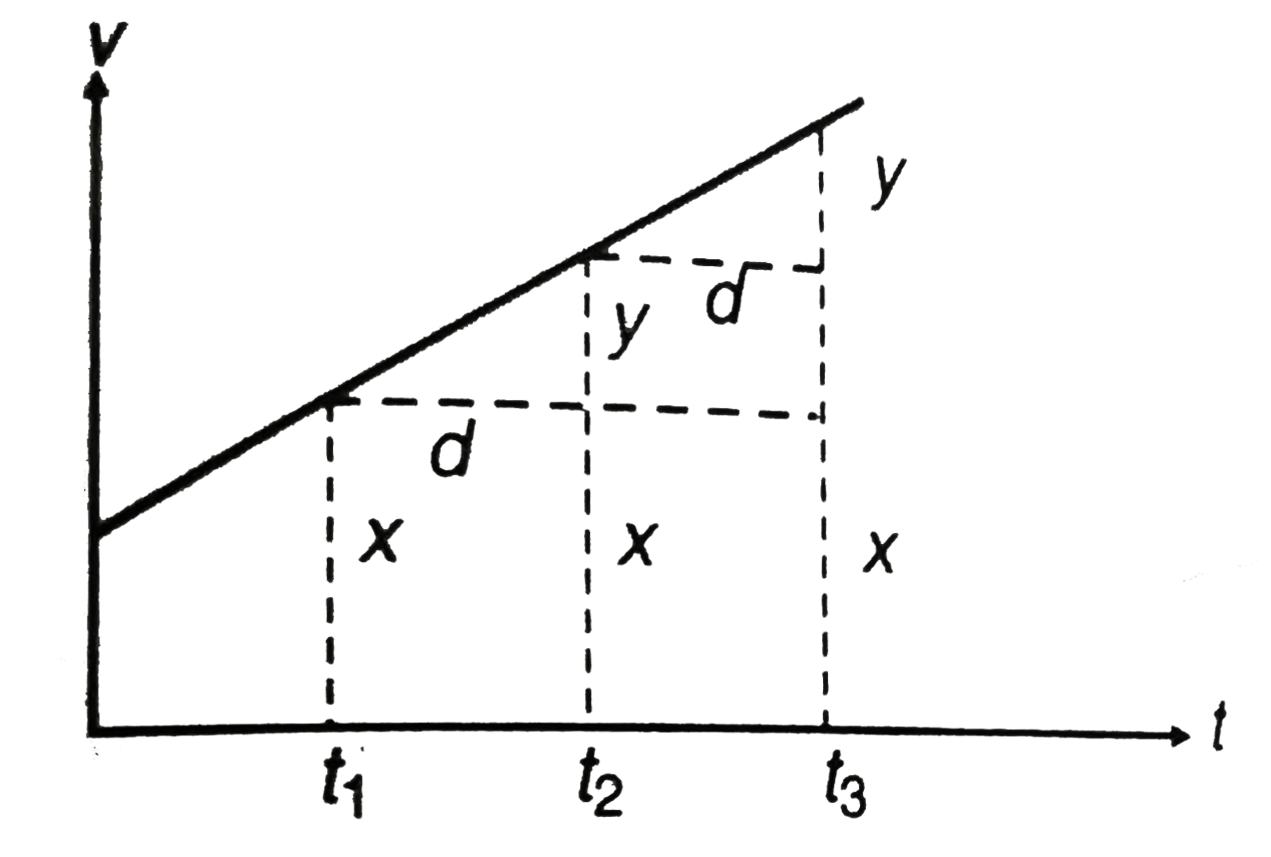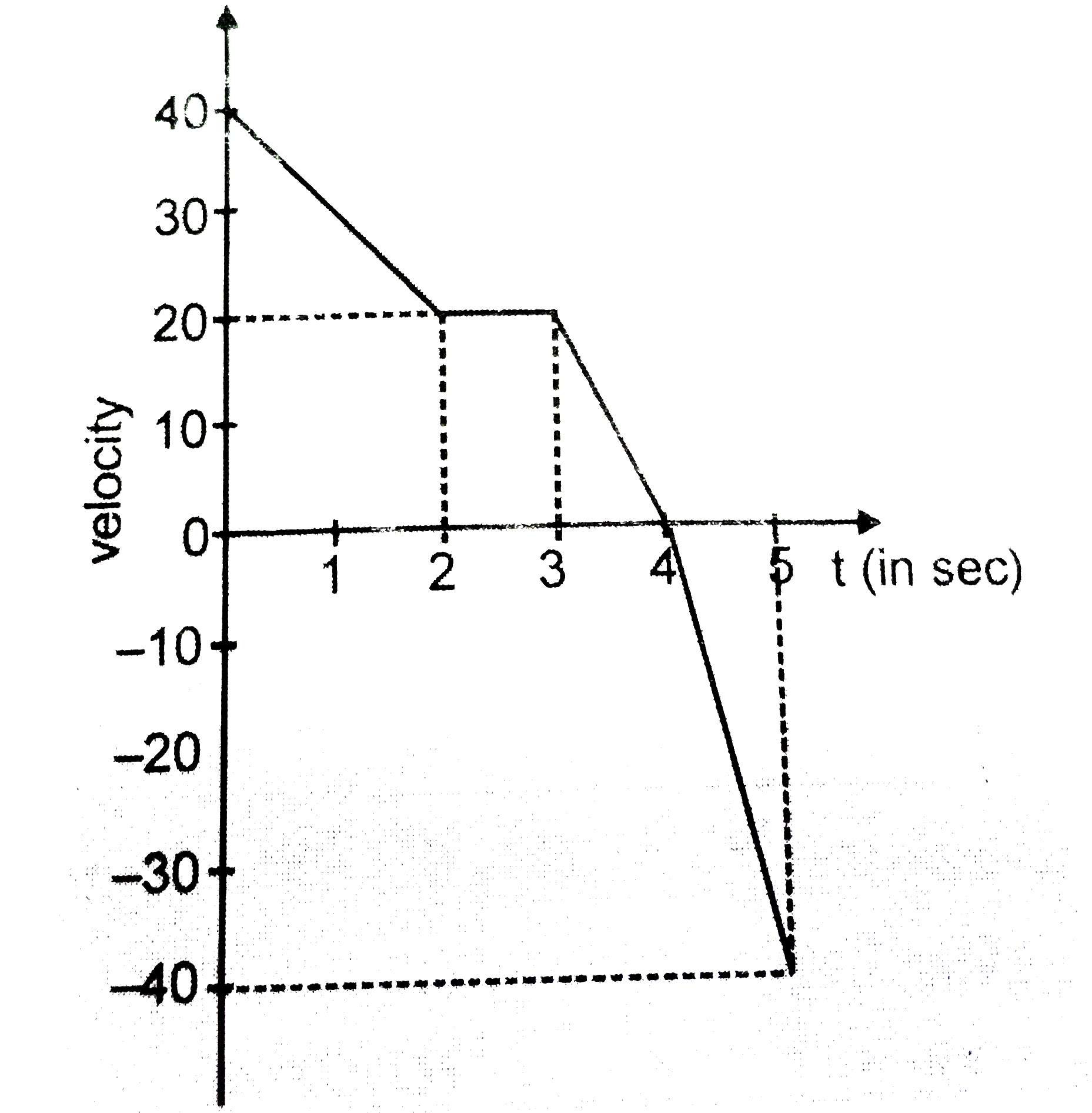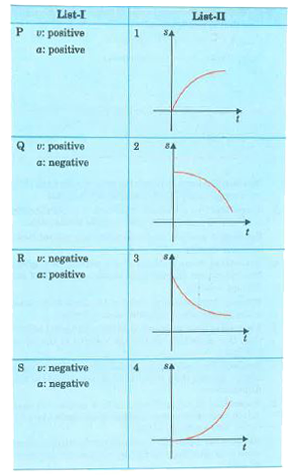A particle moves in a straight line with constant acceleration a. The displacements of particle from origin in times t1,t2andt3ares1,s2ands3 respectively. If times are in AP with common difference d and displacements are in GP, then prove that a=(√s1−√s3)2d2
The correct Answer is:A
Let us draw v-t graph of the given situation, area of
which will give the displacement and slope the
acceleration.

s2−s1=xd+12yd…(i)
s3−s2=xd+yd+12yd….(ii)
Subtracting Eq. (i) from Eq. (ii), we have
s3+s1−2s2=yd
or s3+s1−2√s1s3=yd(s2=√s1s2)
Dividing by d2 both sides we have,
(√s1−√s3)2d2=yd
=slope of v-t graph =a. Hence proved
Topper's Solved these Questions
- BOOK - DC PANDEYCHAPTER - KINEMATICSEXERCISE - SCQ_TYPE41videos
KINEMATICS
- BOOK - DC PANDEYCHAPTER - KINEMATICSEXERCISE - MCQ_TYPE23videos
KINEMATICS
- BOOK - DC PANDEYCHAPTER - KINEMATICSEXERCISE - Comprehension7videos
KINEMATICS
- BOOK - DC PANDEYCHAPTER - GRAVITATIONEXERCISE - (C) Chapter Exercises45videos
GRAVITATION
- BOOK - DC PANDEYCHAPTER - KINEMATICS 1EXERCISE - INTEGER_TYPE15videos
KINEMATICS 1
Similar Questions
A particle moves in a straight line with uniform acceleration and its distances from an origin O on the line (not necessarily the position at time t = 0) at times t1,t2,t3 are d1,d2,d3 respectively. Prove that if t1,t2,t3 form an A.P. whose common difference isd and d1,d2,d3 are in G.P. then the acceleration is(√d1−√d3)2d2
View SolutionA particle starts motion from rest and moves along a straight line. Its acceleration-time graph is shown. Find out speed of particle at t=2s and at t=3s.
 View Solution
View Solution
Knowledge Check
- Question 1 - Select One
If displacements of a particle varies with time t as s=1t2 , then.
AThe particle is moving with constant velocityBThe particle is moving with variable acceleration of decreasing orderCThe particle is moving with constant retardationDThe particle has constant speed but variable velocity - Question 2 - Select One
The displacement of a particle in time t is given by s=2t2−3t+1. The acceleration is
A1B3C4D5 - Question 3 - Select One
A particle is moving with velocity v=4t3+3t2−1m/s.
The displacement of particle in time t=1s to t=2s will beA21 mB17 mC13 mD9 m
A particle starts motion from rest and moves along a straight line. Its acceleration-time graph is shown. Find out speed of particle at t=2s and at t=3s.
 View Solution
View SolutionA particle is moving with initial velocity 1m/s and acceleration a=(4t+3)ms2. Find velocity of particle at t=2sec.
View SolutionA particle moves along a straight line such that its displacement s at any time t is given by s=t3−6t2+3t+4m, t being is seconds. Find the velocity of the particle when the acceleration is zero.
View SolutionA particle moves along a staight line such that its displacement at any time t is given by s=t3−6t2+3t+4m. Find the velocity when the acceleration is 0.
View SolutionFor a particle moving in a straight line assume s,v,a and t represents displacement, velocity, acceleration and time respectively.
 View Solution
View Solution

